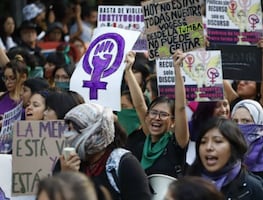Más Información

Secretaria de las Mujeres busca disminuir feminicidios con promotoras de derechos; creará línea para atención a víctimas

Diputada María Teresa Ealy Díaz promueve unidad y tradición en la CDMX; celebra Día de Reyes en la MH

Comisión de Defensa en San Lázaro avala reforma sobre ascensos para médicos militares; busca incentivar especialización

Buscan vinculación a proceso de hotelero por fraude en Baja California Sur; afectados fueron secuestrados al exigir pago

Senado alista mecanismo para garantizar elección judicial tras suspensión del Comité del PJF; Noroña acusa sabotaje
Behind the misuse of resources, there are large-scale corruption networks . That is, there is hardly just one individual you can point at and punish in a corruption scandal – it's an intricate and complex network of accomplices who have all facilitated this illegal practice within a Governmental agency.
In the corruption cases that have become known in Mexico during the last months (in which former governors and their administrations were involved), authorities prosecuted the individuals with the highest profile and notoriety. Nevertheless, corruption at this level – diversion of public funds and irregularities – requires the involvement of lower civil servants , who are rarely punished.
On this regard, EL UNIVERSAL presents today information revealing that in the crimes Roberto Borge (former Governor of Quintana Roo) is accused of, there are at least 17 former civil servants also involved. Similarly to Javier Duarte in Veracruz, or Guillermo Padrés in Sonora, to name a few, Borge didn't act alone when he mismanaged the public funds and assets of the State he was in charge of.
To prosecute former governors who have swindled their States is just the first step in curtailing corruption as a form of government. The next step is to untangle the skein of yarn and find all the public servants who made it possible. Corruption networks – which generally extend to the private sector – need to be rooted out to prevent further damages to public assets and funds.
It's evident the Duarte brothers, Padrés, or Borge, weren't alone. A massive diversion of economic resources cannot be achieved by a single individual. To execute an action on this scale it's necessary to have the assistance of key public servants who agree to cooperate. Herein lies the importance of bringing to light these obscure networks of corruption, not only to be made visible before the public opinion but also to prevent their survival within the bureaucracy.
To eradicate corruption networks there should be enough understanding of the phenomenon to know it goes beyond high-profile politicians. Our public debate needs clarity on corruption and its social, economic and institutional impact. We need to understand the damage done to our national development and work on a social agreement capable of isolating corruption and its representatives.
To fight corruption in public sectors it's not just the prosecution of the head of an administration or government, it's to go after the illegal behavior of its supporting structure. Only then will we truly neutralize corruption.
am





